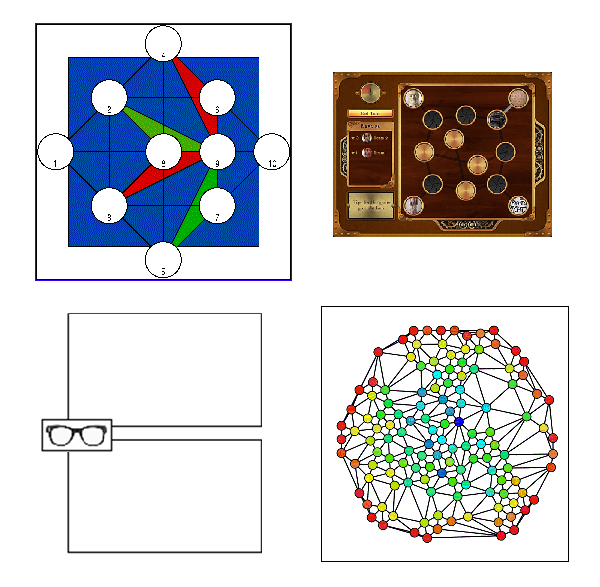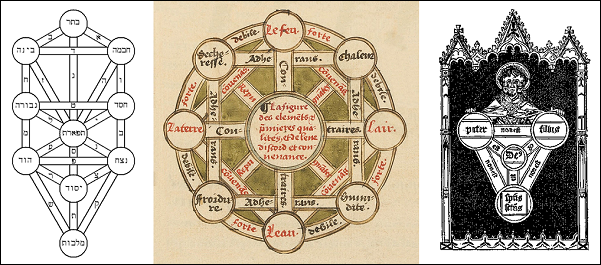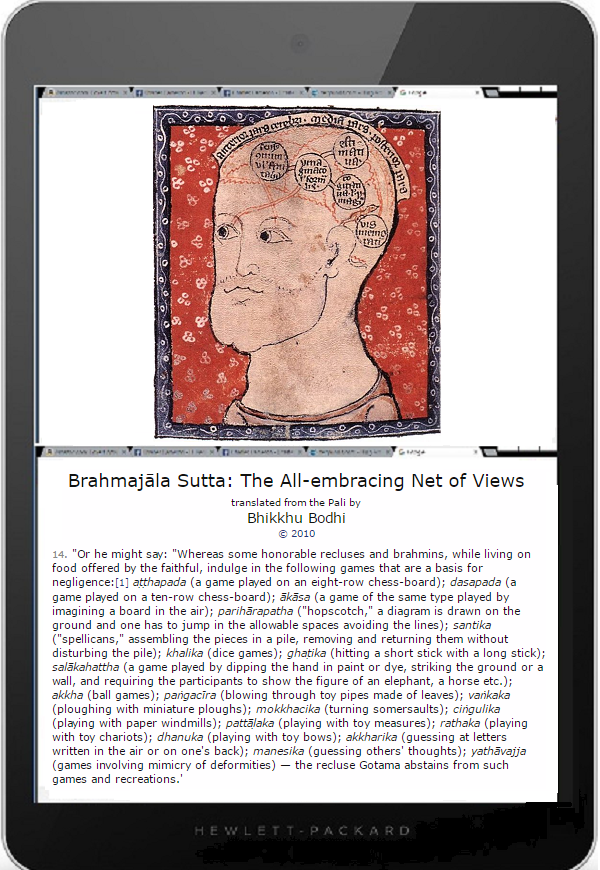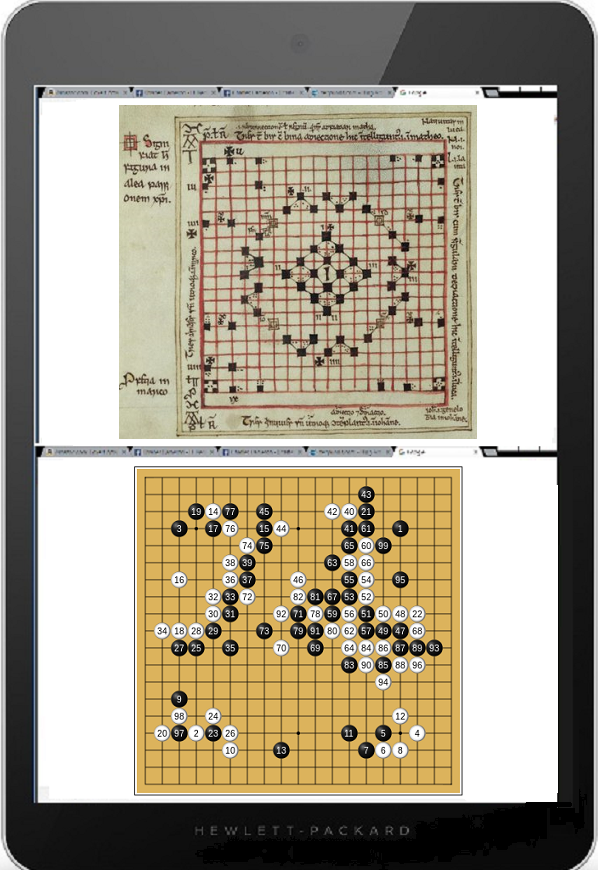A rosary of glass beads for Emily Steiner
[ by Charles Cameron — semantic networks as game boards, old and new — see also the series presently linked at and ending with On the felicities of graph-based game-board design: six ]
.
Since I’m plaguing Emily Steiner with my thoughts on two of her recent tweets, I’d best explain first the reasons for my interest.
top left, a HipBione “WaterBird” board; right, Cath Styles‘ “Museum Game” board; lower left, an early HipBone “DoubleQuote” board; right, the “Said Symphony” board
As long time readers here will already be aware, I’m involved in the design, development and play of a family of games based on Hermann Hesse‘s conceptual Glass Bead Game, using boards that are what mathematicians would term graphs:
**
Technically, our game boards in the course of play are what Margaret Masterman termed semantic networks — and Masterman herself cited one such network from an earlier century imaging the Trinity — here on the right panel — which I have reproduced in the triptych below along with a diagram of the Kabbalah, left, and of the elements by Oronce Fine, center:
**
Which brings me to the first of two tweets Prof. Steiner posted today — the image of a head, with what is clearly a semantic network inside it — thoughts connecting with thoughts, or brain areas with brain areas, or perhaps both:
Viewed from the perspective of the HipBone Games, this semantic network within a brain (mind) is what the Buddha termed, somewhat reprovingly, a game played akasa, “by imagining a board in the air”.
**
But the Buddhist tradition wasn’t always as, what shall I say? — puritanical about games:
As you’ll see, the upper panel here is a bit more relaxed on the subject of games in Buddhism — while the lower panel shows another game board, this one for a medieval Christian game on the Gospels, which Dr Steiner featured in the other tweet of hers that caught my eye today.
There are four canonical Gospels, Matthew, Mark, Luke, and John, but they’re actually asymmetrical, Matthew, Mark, and Luke sharing properties and chunks of text which have conferred on them the group title of the “synoptic gospels” — while John is more symbolic, deeper, indeed mystical, and stands alone.
There’s a saying about them, Read, Mark, Learn, and Inwardly Digest. I don’t believe it’s intended to name the four pof them, but since Mark is second in order both in the saying and in the sequence of gospels found in the New Testament, I’m happy to consider John’s Gospel to be the equivalent of Inwardly Digest
**
But bringing the ancients into the modern day is a laudable activity, so I’ll close by taking that Gospel game board, as I like to think of it, and compariung it with one of the boards from the recent series of games in which AlphaGo — clearly a duende or djinn of some sort — beat out our best-living Go master in a series of 5 games:
Again, symmetry and asymmetry. Is the symmetry of the Gospels game a symmetry of the Divine Mind? And is the asymmetry of the game of Go an asymmetry of the two minds in play — or simply of a game in which one player gets to make the first move?
I look forward to learning from Dr Steiner how the Gospel game was played.







